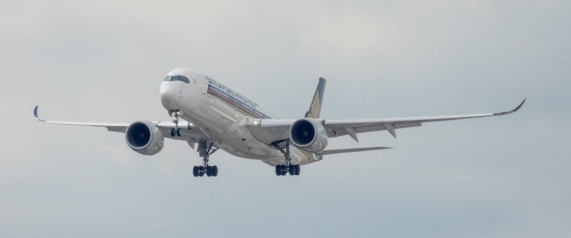
Economic Drivers for Air Travel in 2026
Evanne Evans, 12 Mar 2025
In 2025, the global aviation industry is navigating a complex economic landscape marked by robust passenger demand, fluctuating fuel prices, and geopolitical uncertainties. Understanding these dynamics is crucial for stakeholders aiming to capitalise on emerging opportunities and mitigate potential risks. atpi
Current Economic Factors Influencing Air Travel in 2025
1. Global Economic Growth
According to ACI World, the International Monetary Fund projects a global economic growth rate of 3.2% for 2025, with advanced economies growing at 1.8% and emerging markets at 4.2%. This steady growth underpins increased disposable incomes, particularly in emerging markets, bolstering leisure and business travel demand.
2. Declining Fuel Prices
Multiple economic sources report a significant drop in oil prices, which has reduced jet fuel costs, which constitute approximately 30% of airline operating expenses. This decline enables airlines to offer more competitive fares, stimulating passenger demand across various markets.
3. Aircraft Delivery Delays
According to McKinsey and Company, manufacturers like Boeing and Airbus are experiencing production setbacks, resulting in delayed aircraft deliveries. These delays constrain capacity expansion, particularly for low-cost carriers, potentially leading to higher load factors and fare adjustments.
4. Geopolitical Tensions and Trade Policies
Trade disputes, notably between the U.S. and the EU, are introducing uncertainties in aircraft procurement and route planning. Such tensions may compel airlines to modify fleet strategies and explore alternative markets to mitigate risks.
Anticipated Trends for 2026
1. Resurgence of Business Travel
After a period of subdued activity, corporate travel is expected to rebound gradually in 2026, which will be pivotal in restoring airline profitability and route viability.
2. Expansion in Asia-Pacific Markets
The Asia-Pacific region is poised for significant growth, with countries like India, Indonesia, and Vietnam leading the charge. Economic expansion, urbanisation, and a burgeoning middle class are key drivers, making the region a focal point for airline network development.
3. Technological Advancements and Sustainability
Airlines are increasingly investing in advanced retailing strategies, including dynamic pricing and streamlined booking systems. Simultaneously, there is a growing emphasis on sustainability, with carriers adopting fuel-efficient aircraft and exploring alternative energy sources to meet environmental targets.
4. Adaptation to Consumer Behaviour
The prioritisation of travel, particularly for leisure, remains strong, with many passengers citing summer vacations as a top discretionary expense. Airlines are tailoring offerings to align with evolving consumer preferences, enhancing customer experience and loyalty.
The International Civil Aviation Organization is a United Nations specialized agency that has released its strategic plan for 2026-2050. It states that ‘air traffic is projected to reach 12.4 billion passengers by 2050,’ resulting in the need for industry-wide revised and additional safety, security, efficiency, and sustainable practices.
The organizations six primary strategic goals are:
- Flights are safe and secure
- Aviation is Environmentally Sustainable
- No Country Left Behind (collaboration is key)
- Seamless, Accessible, and Reliable Mobility
- Economic Development is fostered
- A Comprehensive Legal Framework is maintained
These strategic goals are supported by four “high enablers”:
- ICAO Continuous Organizational Improvement
- Gender Equality and Attracting New Talent
- Innovation
- Partnerships, Resource Mobilization, and Financial Sustainability
The global air travel industry in 2025 will be characterised by a confluence of economic growth, cost dynamics, and regional variations. As we look towards 2026, adaptability and strategic planning will be essential for airlines to navigate the evolving landscape and capitalize on emerging opportunities.


